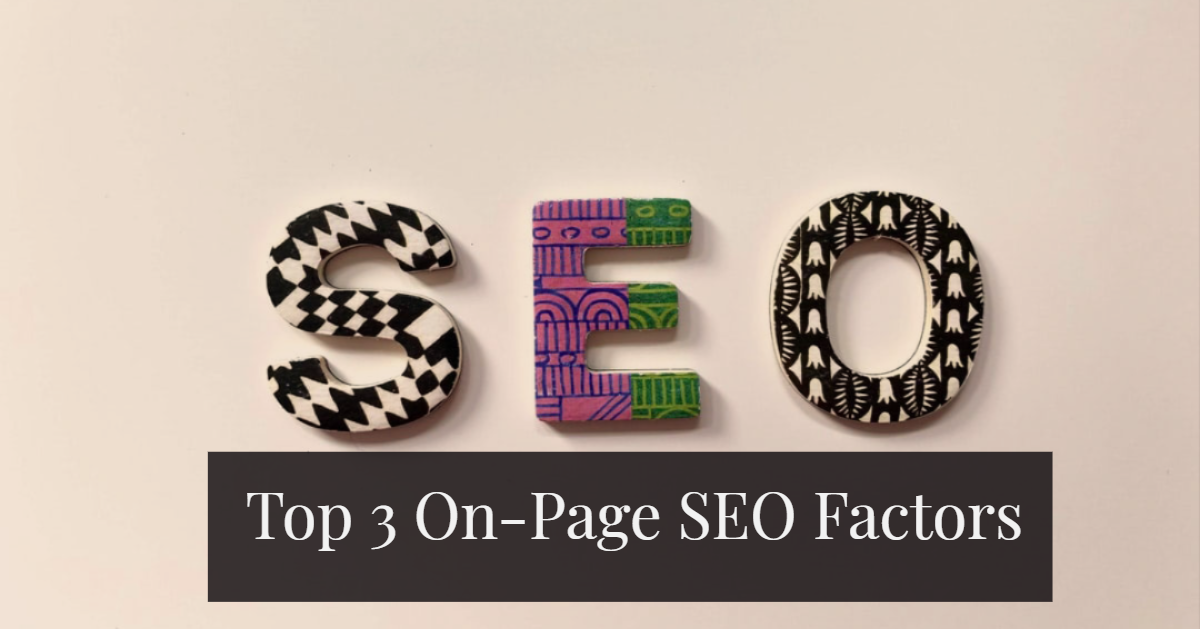I have discussed On-Page SEO Techniques before. However, there are three on-page SEO factors that contribute to 95%+ of your site’s initial ranking ability. There are additional factors like engagement factors that don’t come into play at 1st. For the purposes of this article, we are only considering what you build on your site, and how to build it properly.
First of all, you need to have done your marketing keyword research before you try to complete the following 3 factors because without that you do not really know what you are building for.
(1) URL and (2) Title
Number one and number two are the URL and the title. If you consider a single, isolated page and you do not consider any off-page SEO or how that page interacts with any other parts of your site, 95%+ of what Google uses to determine what that page is relevant to is going to be the title and the URL.
If you get Title and URL right, then all the rest of the stuff you can just completely not do that well or at all and still be fine, generally speaking. There are a couple of good things about this. A lot of people, when they look at ten factors, spend more time on that and it will be over-optimized or just wasteful of their time and resources.
Once you’ve setup a targeted URL and title, then you can build everything else naturally with what you think your market wants to see and you will be just fine. As long as the content on your page speaks to your target market, you will be good. I have written more about engagement SEO here.
Your URL and your title tells Google a lot about that page. You only have one title and you only have one URL for a single page. As a result, they rightfully take a lot of meaning from them.
There are lesser things like your H1 tags, more meta tags, images, and about 100 others. The old school mindset of, “I want to get my keyword in there a certain amount of times” is not useful. I would say lean more towards not putting your keyword in your content repeatedly, only a few times. After that, use variations or trim it down and do whatever you can to make it seem like you are not trying too hard to jam it into your content as many times as possible (aka “keyword stuffing”).
Essentially, there is an infinite amount of minutia that you can do on a single page. There are so many reports where they will add another twenty or a hundred things to this list. Technically, some of them are true. There are an infinite amount of things you can do to technically improve the SEO of a page, but your time and resources are more valuable than that. At least, I know my time is more productively spent elsewhere for my clients.
Use our SEO audit tool below to check if the Title and URL of your page is SEO-friendly.
(3) Interlinking and Site Structure
The final piece is interlinking. Google looks at all the different pages on your site and how they fit together. Really, it comes down to what pages a specific page is linking to and what pages are linking to it. If you do what many do and link every page to every page or interlink haphazardly with no organization, then your site is missing out on substantial relevancy boosts.
So what you really want to do is you want to consider relevancy. You do not want to link two pages that are sort of relevant. You want to only link pages that are very relevant to each other. There is a specific way of building this. If you have done your market research right and you understand how this works, there is a very specific way to interlink it that matches a natural hierarchy of the concepts that your market is searching.
Despite that fact that building a natural and SEO boosting site structure and interlinking on a site comes very easily to me, many businesses struggle to understand what we’re looking to do here. Often times they are over-complicating their approach to building the site structure. Simply ask yourself, “how would I scientifically organize all the different searches my market making into categories, sub categories, sub-sub categories (if nec), etc?”
If you are having trouble setting up a hierarchical conceptual tree structure, then definitely shoot me an email and we can work it out how this fits within your current SEO project.
In summary, if you get these three things right – the URL, the title, and the interlinking of your site – the rest of what goes on your site is extremely minor by comparison.















